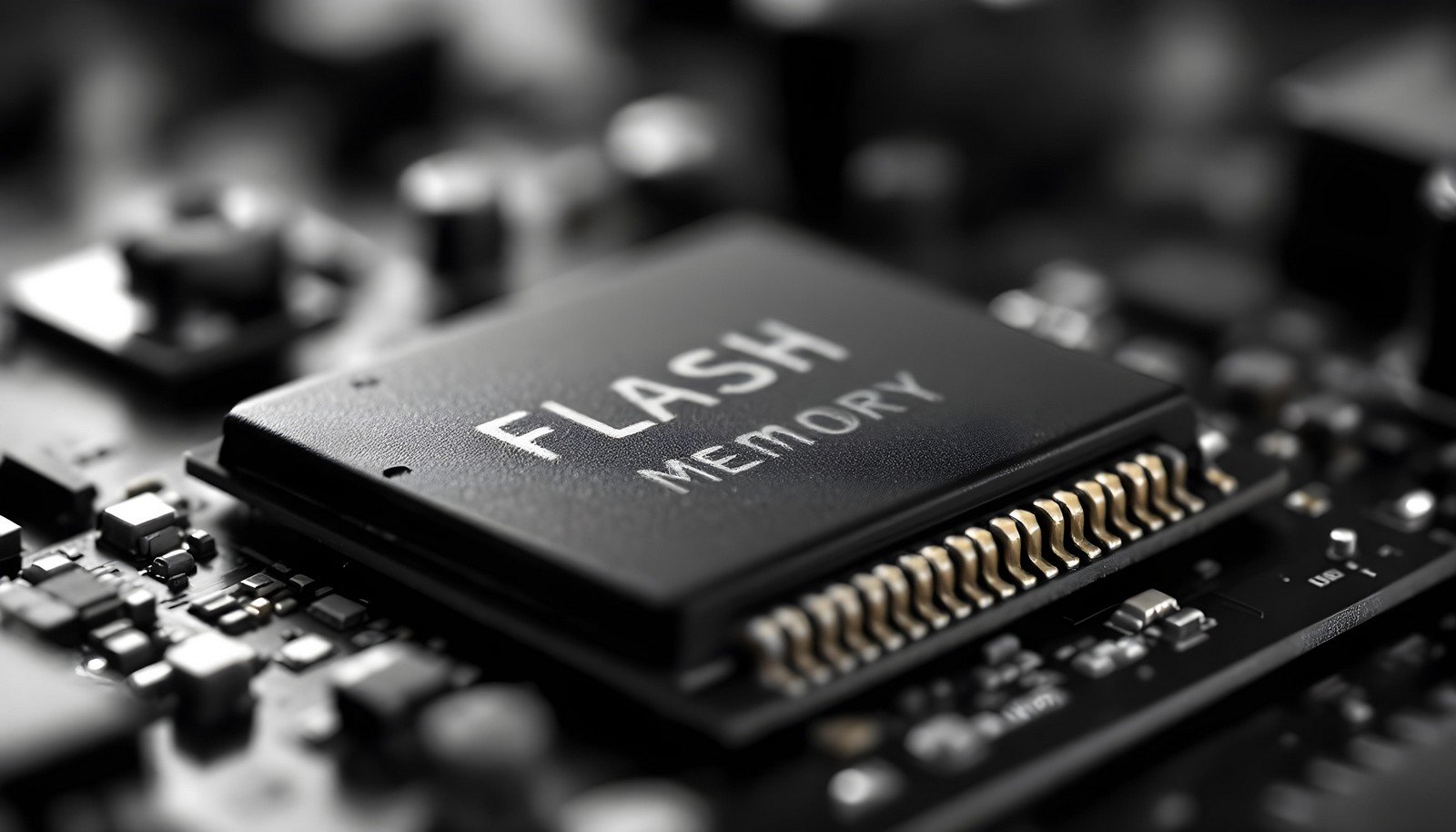Flash Memory

Quick Navigation:
- Flash Memory Definition
- Flash Memory Explained Easy
- Flash Memory Origin
- Flash Memory Etymology
- Flash Memory Usage Trends
- Flash Memory Usage
- Flash Memory Examples in Context
- Flash Memory FAQ
- Flash Memory Related Words
Flash Memory Definition
Flash memory is a type of non-volatile storage technology that retains data without requiring a constant power supply. It uses an array of memory cells made from floating-gate transistors, enabling high-speed reading, writing, and erasing of data. Flash memory is widely used in USB drives, solid-state drives (SSDs), memory cards, and embedded systems. Its durability and compact design make it ideal for portable devices.
Flash Memory Explained Easy
Imagine a notebook where you can write, erase, and rewrite notes without needing a pencil or pen all the time. This notebook keeps your notes even when you close it. Flash memory works similarly. It stores information safely even when the power is off, making it great for phones, cameras, and computers.
Flash Memory Origin
Flash memory was first developed in the 1980s by Fujio Masuoka at Toshiba. It was named "flash" because it allows data to be erased and rewritten in a "flash" compared to traditional methods.
Flash Memory Etymology
The term "flash" signifies the speed of data erasure and rewriting processes.
Flash Memory Usage Trends
Flash memory has seen exponential growth in demand, thanks to advancements in mobile devices, gaming consoles, and cloud storage. Its energy efficiency and portability make it a preferred choice in modern electronics.
Flash Memory Usage
- Formal/Technical Tagging: Non-Volatile Memory, Data Storage, Semiconductor Technology
- Typical Collocations: "flash memory storage," "USB flash drive," "flash memory chip," "flash-based SSDs"
Flash Memory Examples in Context
- Smartphones rely on flash memory to store apps, photos, and settings.
- Modern cameras use flash memory cards to save high-resolution pictures and videos.
- Solid-state drives (SSDs) in laptops employ flash memory for faster data access.
Flash Memory FAQ
- What is flash memory? Flash memory is a non-volatile storage type that retains data without power.
- How does flash memory work? It stores data using floating-gate transistors, allowing efficient data access and retention.
- Where is flash memory used? It is used in USB drives, SSDs, smartphones, cameras, and embedded systems.
- What are the advantages of flash memory? It is compact, durable, fast, and consumes less power.
- Can flash memory wear out? Yes, it has a finite number of write/erase cycles, though modern designs extend its lifespan.
- Is flash memory faster than traditional storage? Yes, especially compared to magnetic storage like hard drives.
- What is the difference between flash memory and RAM? Flash memory is non-volatile, while RAM requires power to retain data.
- How does flash memory impact modern devices? It enables lightweight, portable, and energy-efficient electronics.
- Is flash memory secure? While it can store encrypted data, it is prone to data corruption if mishandled.
- What is the future of flash memory? Innovations like 3D NAND technology promise higher capacity and durability.
Flash Memory Related Words
- Categories/Topics: Data Storage, Solid-State Technology, Semiconductor Devices
Did you know? The first flash memory chip was introduced by Toshiba in 1984. Since then, it has revolutionized data storage, enabling the rise of lightweight and portable gadgets like USB drives, smartphones, and wearable devices.
PicDictionary.com is an online dictionary in pictures. If you have questions or suggestions, please reach out to us on WhatsApp or Twitter.Authors | Arjun Vishnu | @ArjunAndVishnu

I am Vishnu. I like AI, Linux, Single Board Computers, and Cloud Computing. I create the web & video content, and I also write for popular websites.
My younger brother, Arjun handles image & video editing. Together, we run a YouTube Channel that's focused on reviewing gadgets and explaining technology.



Comments powered by CComment